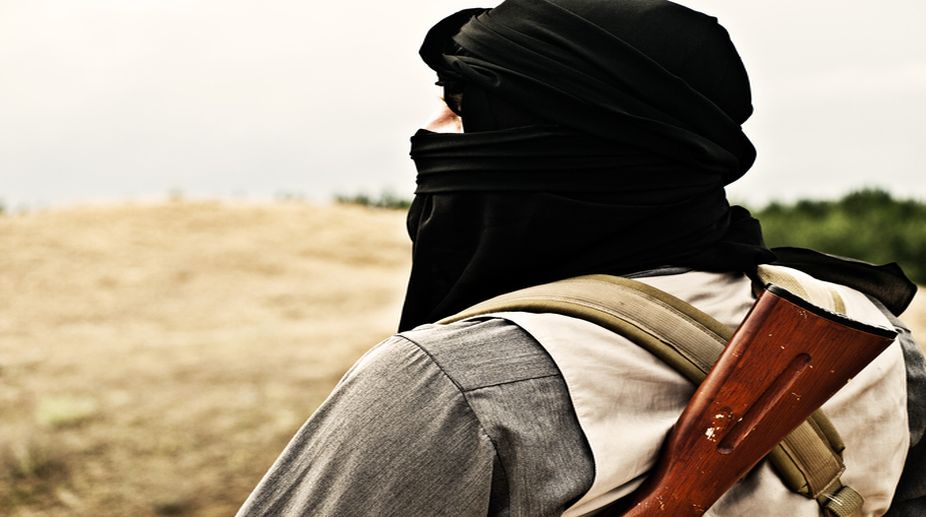8 kg heroin smuggled from Pakistan seized in Srinagar
In a major success, the Srinagar police on Wednesday dismantled a major drug trafficking operation and seized 8 kilograms of heroin smuggled from Pakistan.

Representational Image (PHOTO: GETTY IMAGES)
There were many who believed the Pakistan army would never confront the militants in North Waziristan. Too many strategic assets were located there, they said. And the cost of appeasing the West by dismantling the militants’ infrastructure would be too high. But the predictions were wrong. Eventually — after years of hesitation — the army did move in. It’s easy to forget now that back in 2007 it was not uncommon to hear Peshawarites say they were moving their children out of the city for fear that the state could not provide sufficient security. And even if many of those parents still worry today about the risk of their offspring being kidnapped, there can be little doubt that the situation is vastly improved.
Many of those who doubted the army’s resolve also thought it would never make a genuine effort to control the Pak-Afghan border. After all, for years the army had said it could not control the movement of militants from Pakistan into Afghanistan because the border was so porous. But now that the flow is reversed it turns out that the border can be controlled. There are new posts, forts and radar systems to stop militants getting into Pakistan from Afghanistan.
Advertisement
It all prompts the question: are these developments in northwest Pakistan a one-off? Or are they a model for what might happen in the rest of Pakistan?
Advertisement
The army would doubtless argue that its fight against militant violence is by no means restricted to the northwest. The Fata campaign has been matched by a commitment to tackle militancy in Karachi. And even if many might see the Baloch insurgency in a different light to violent jihadism, from the military’s point of view, in Balochistan too, the state has confronted those who violently oppose the state.
And yet elsewhere in the country some militant outfits remain untouched. There are three types of groups to consider: those active in Afghanistan, the sectarian groups and the India-facing outfits.
Despite all the impassioned official denials, the world has little doubt that the Afghan Taliban leadership has sanctuary in Quetta. Given that foreign affairs adviser Sartaj Aziz said as much it’s difficult to believe anything else. And there is a reason for this policy. In the minds of some of Pakistan’s military strategists the protection offered to senior Afghan Taliban leaders and their families serves Pakistan’s national interest. The international community, the argument goes, will be unable to get a peace deal Afghanistan without going through Pakistan.
Similarly, the links with India-facing groups are plain for all to see. The idea that Pakistan can rely can on the indigenous movement in Kashmir may be gaining ground in some official circles but as long as Modi is in power the Pakistani militants are going, at the very least, to be held in reserve.
Which leaves the sectarian groups. Even for the most hard-bitten supporter of the state’s use of jihadi proxies, support or toleration of the sectarian groups is very hard to understand. The sectarian groups cause huge suffering. They deepen a potentially disastrous rift in Pakistan society. They are already the subject of outside interference and financing and thereby undermine Pakistan sovereignty. In addition, they offer a potential route for the militant Islamic State group to get into Pakistan society. While many analysts believe IS lacks the infrastructure or popular support base to become a major force in Pakistan, there is still a risk that the organisation could become established by forming an alliance with anti-Shia groups such as Lashkar-i-Jhangvi.
Despite all these serious considerations the sectarian groups continue to operate. The most likely explanation — beyond sectarian prejudices reportedly held by some senior officers — is that these groups are now so numerous that confronting them head-on would risk something approaching civil war in the key province of Punjab.
There are other reasons to believe that various types of militant groups active outside the northwest will not be touched. The civilian government has still failed to adopt a clear position on militancy. Maulana Abdul Aziz Ghazi, one of the leaders of the Lal Masjid rebellion, remains in charge of an institution that became a byword for antistate violence and which was cleansed of violent elements at a high cost to human life. Nor has the government instituted sufficiently thorough reforms to undermine the militants by providing people with schools, hospital and courts.
But the failings are not by civilians alone. The lack of resolve is also creeping into military parlance. Increasingly, the military is moving away from saying militancy reflects internal divisions in Pakistan. Instead, it is taking the much easier and convenient line of blaming it all on foreigners. Even if such claims are sometimes justified, they run the risk of become a catch-all explanation that will undermine the clear thinking needed to take on such a difficult adversary.
The writer is a British journalist and author of Pakistan: Eye of the Storm.
Advertisement